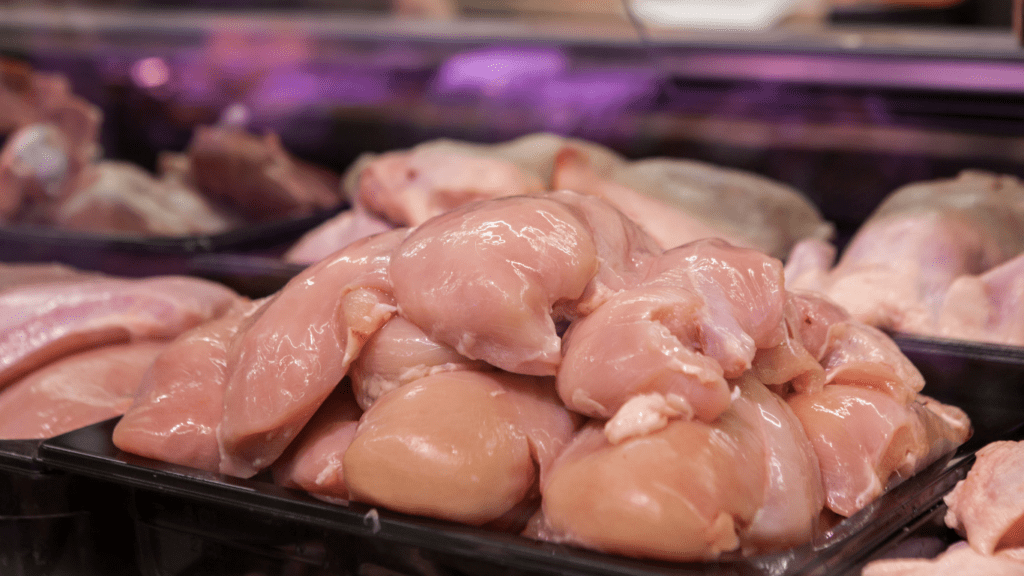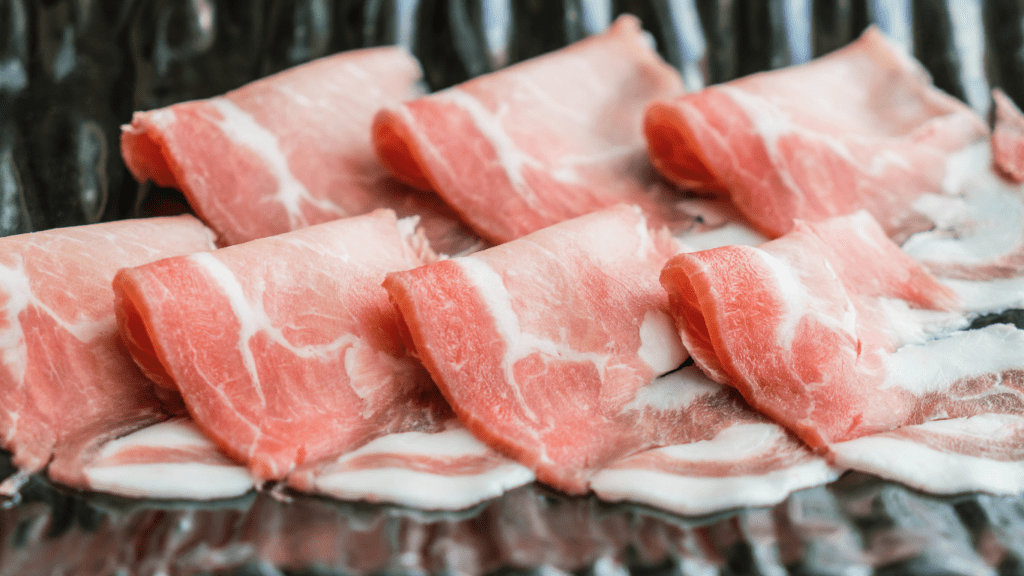Understanding Raw Diets for Pets
Raw diets for pets have gained popularity among pet owners seeking natural nutrition for their animals. By exploring their definition, history, and common ingredients, you can better understand this dietary option.
Definition and History
A raw diet consists of uncooked meats, bones, fruits, and vegetables meant to mimic what pets would naturally eat in the wild. This concept dates back to the 1930s when Dr. Ian Billinghurst introduced the BARF (Biologically Appropriate Raw Food) diet for dogs. Advocates believe this diet aligns with pets’ evolutionary needs, offering a more natural and healthful option compared to processed foods.
Common Ingredients
Raw diets typically include a variety of raw meats, organs, bones, fruits, and vegetables. For example:
- Meats: Chicken, beef, lamb
- Organs: Liver, kidney, heart
- Bones: Chicken wings, beef ribs
- Fruits: Apples, blueberries
- Vegetables: Carrots, spinach
These ingredients are often chosen to provide a balanced mix of proteins, fats, and essential nutrients. Some diets also incorporate supplements to ensure pets receive all necessary vitamins and minerals.
Benefits of Raw Diets
Feeding pets raw diets comes with several potential benefits. Let’s explore these key advantages to understand their impact better.
Improved Digestion
Raw diets can enhance digestion in pets. Fresh, raw ingredients like meat and vegetables contain natural enzymes, aiding in food breakdown. Anecdotal evidence suggests that pets on raw diets experience fewer digestive issues like bloating and gas compared to those on processed pet food.
Healthier Coat and Skin
Pets on raw diets often showcase shinier coats and healthier skin. Essential fatty acids found in raw meats, such as omega-3 and omega-6, contribute to skin hydration and coat sheen. Many pet owners report reduced incidents of skin allergies and irritations in their pets after switching to raw diets.
Increased Energy Levels
Pets consuming raw diets frequently exhibit increased energy levels. Nutrient-dense ingredients, such as raw meat and fresh vegetables, provide a natural source of vitamins, proteins, and minerals, enhancing overall vitality. Observations indicate that pets on raw diets tend to be more active and playful.
Potential Risks and Drawbacks
Raw diets for pets offer many benefits, but there are also significant risks that pet owners must consider.
Nutritional Imbalances
Nutritional imbalances may occur in raw diets if not properly formulated. Pets require a precise balance of vitamins, minerals, proteins, and fats. Incomplete or poorly crafted raw meals can lead to deficiencies or excesses. For example, calcium deficiency due to lack of bones or supplements may lead to bone disorders. Similarly, vitamin A toxicity from excessive liver consumption is a risk. Consulting a veterinary nutritionist helps in creating a balanced diet.
Risk of Bacterial Contamination
Bacterial contamination remains a major concern with raw diets. Raw meats often harbor harmful bacteria like Salmonella and E. coli, which can cause severe illness in pets and humans. A study by the FDA revealed that raw pet foods had higher instances of bacterial contamination compared to processed foods. Proper handling and hygiene are critical to mitigating these risks, but contamination risks never fully disappear.
High Cost and Preparation Time
- High cost and preparation time deter many from adopting raw diets.
- Premium raw ingredients like organic meats can increase monthly pet food expenses significantly.
- Preparing balanced meals requires time and effort, as you must carefully measure, chop, and organize various components.
- While some pet owners solve this problem by purchasing commercial raw diets, these products are often more expensive than kibble or canned food.
- Those considering a raw diet need to evaluate if the benefits outweigh these practical challenges.
Expert Opinions on Raw Diets

Experts have varied opinions on raw diets for pets. While some advocate for their benefits, others express concerns about potential risks.
Veterinarian Perspectives
Veterinarians often hold cautious views on raw diets. Many express concerns about the risk of bacterial contamination in raw meats. According to the American Veterinary Medical Association (AVMA), feeding raw diets can expose pets and humans to harmful pathogens like Salmonella and E. coli. These bacteria can cause severe health issues, especially in immunocompromised individuals.
Veterinarians also highlight the challenge of ensuring balanced nutrition. Raw diets may lack essential nutrients if not properly formulated, leading to deficiencies or toxicities. Organizations like the World Small Animal Veterinary Association (WSAVA) advise pet owners to consult with veterinarians when considering raw diets. This ensures pets receive all necessary nutrients in appropriate proportions.
Pet Nutritionists’ Insights
Pet nutritionists provide in-depth insights into raw diets. They emphasize the importance of proper ingredient selection and preparation. Pet nutritionists often recommend raw diets tailored to individual pets’ needs, based on factors like age, breed, and health status. This personalized approach can help address specific dietary requirements and reduce the risk of nutritional imbalances.
Many nutritionists advocate for regular monitoring and adjustments to a raw diet. They suggest incorporating supplements to fill nutritional gaps that may arise. Additionally, pet nutritionists stress the need for hygiene and safe handling practices to minimize the risk of bacterial contamination.
By offering a balanced view, both veterinarians and pet nutritionists contribute valuable expertise to the discussion on raw diets for pets.
How to Safely Implement a Raw Diet
Implementing a raw diet for pets involves several critical steps to ensure their safety and health. Focus on sourcing quality ingredients, proper storage and handling, and a gradual transition.
Sourcing Quality Ingredients
Start with high-quality meats, organs, and bones. Look for suppliers who specialize in pet food-grade products. Avoid using meats treated with antibiotics or hormones. Include fruits and vegetables like carrots, apples, and spinach to provide essential vitamins and minerals.
Proper Storage and Handling
Store raw meats in a cold environment. Keep ingredients in the freezer until needed. Thaw them in the refrigerator to prevent bacteria growth. Use separate cutting boards and utensils for raw meat to avoid cross-contamination. Clean all surfaces and tools with hot, soapy water after each use.
Gradual Transition Tips
Transition pets gradually by mixing small amounts of raw food with their current diet. Increase the raw food portion over 7-10 days. Monitor pets for signs of digestive upset, like diarrhea or vomiting. Adjust the diet based on pets’ response and consult a veterinarian if issues arise.



 Lead Pet Behavior Specialist
Brian Camacho is an expert in pet behavior and training at Pet Paw Shack. With a deep understanding of animal psychology, he specializes in helping pets and their owners build strong, healthy relationships through positive reinforcement techniques. Brian’s innovative approach to training focuses on making behavior modification a fun and rewarding experience for both pets and their families.
Lead Pet Behavior Specialist
Brian Camacho is an expert in pet behavior and training at Pet Paw Shack. With a deep understanding of animal psychology, he specializes in helping pets and their owners build strong, healthy relationships through positive reinforcement techniques. Brian’s innovative approach to training focuses on making behavior modification a fun and rewarding experience for both pets and their families.
